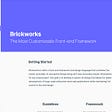Writing your way from advertising to UX
Like many of my peers, UX writing is a never-ending (and fairly new) learning experience for me. In fact, I was already a few years out of college before I’d ever even heard the term… and I’m not that old.
It wasn’t even on my radar in the beginning. I was too busy idolizing admen like David Ogilvy and Leo Burnett. I read books like Confessions of an Advertising Man; Hey Whipple, Squeeze This; and Truth, Lies & Advertising. By junior year of high school, I had a subscription to both AdAge and Adweek. I was convinced I’d be attending the Miami Ad School and winning the Cannes Grand Prix by 25.
But things change.
When it first came to choosing a college major, advertising seemed like a no-brainer. Although the market was a bit more cutthroat than I had anticipated, I spent the next four years learning ad buying, ad strategy, copywriting, design, marketing strategy, and project management. To me, the path forward was obvious.
But, even at the onset of my college career, the landscape was beginning to take on a new shape. Facebook was growing larger by the minute and Myspace had already become a staple of my generation. By the time I graduated, sites like Instagram, Twitter, and Tumblr had entered themselves into the social media fray as well. The idea of traditional advertising, while still very much alive, was losing ground to the digital world at a rapid pace.
Little did I know that this cultural shift would go on to impact my entire career. It seemed like overnight my focus went from radio scripts and print ads to blogs and web content. Then came experience flows, microcopy, and a slew of other writing needs that didn’t exist just a decade ago.
I didn’t let these new requests slow me down though. I adjusted on the fly and learned as I went. I spent most evenings reading books on UX and scrolled through various sites to see how they handled their content, page-by-page. I read blogs on personalization and progressive disclosure. I went to lectures on mobile-first approach and took as many freelance projects as I could just to gain new experience.
These days, Juniors entering the workforce won’t need to worry about such a transition, because these elements are engrained in the curriculum and very much a part of their everyday lives. But what about the rest of us? Whether you work at an ad agency, a digital studio, a branding firm or a UX shop, I truly believe you need to conquer both advertising and UX to find success in this new age.
So, where do you begin? Well, it depends on your current role and career goals. But, I think knowing some of the key differences is a good place to start. That’s why I’d like to share a few things I’ve learned along the way. Perhaps these will help prepare you to write for each discipline’s unique goals.
Writing with purpose
Copywriting is a passive, sales-oriented method of storytelling. At the end of the day, the purpose is always to convert a sale or create a brand advocate. As a writer, the goal is to make a product sound so compelling the customer needs to buy it. Headlines can shock and amuse. They can be obscure and irreverent. As long as they are read and retained, nothing else really matters. The impact is key.
UX Writing in an active, product-oriented method of sharing conversations. At the end of the day, the purpose is always to provide an explanation with simplicity and clarity. As a writer, the goal is to entice the reader to continue forward on their journey. Content needs to be simple, clear, and useful. It also has to speak to the customer right in front of you. Are they there for research? We’d better focus on detail. Are they there to finalize a purchase? We’d better focus on ease-of-use and conversion.
Basically, advertising wants to entice the customer to take action. UX wants to ensure that action is enjoyable enough that the customer does it over and over again.
There’s a time & a place for everything
In Copywriting, creativity is king. Advertising is built on personality. The market is saturated with similar brands selling nearly identical products. So, how can we differentiate ourselves and command attention? We could showcase a particular lifestyle and a story of social ascent. We could focus on the benefit and highlight how much easier life would be if the product is purchased. We could SHOUT! or we could question? or we could do something entirely new.
In UX Writing, usability reigns supreme. When it comes to personality, we have to be cautious of where and when we interject it because one wrong line and we might throw off the entire experience. Points of personality have to be in balance with the information-forward content. Whether we’re engaging customers on social media or navigating them through a checkout flow, we need to make sure the experience works flawlessly—each and every time.
Does the call-to-action clearly indicate what will happen when it’s clicked (or tapped)? Are we effectively explaining why we need the customer’s email address? Every single word needs to be meticulously crafted to maximize its meaning.
There’s always been a fine line between entertainment and information. You never want to bore a customer, but you also need them to do more than just enjoy your content. If you think of it like a teeter-totter, advertising is propped up by the creative side, while UX is propped up by the informative side.
Static cling
Advertising is a static medium. Once that print ad is published there’s no turning back. If your Super Bowl spot just aired, you can’t exactly reshoot it on-the-fly due to negative viewer feedback. You just have to live in the moment and respond down the road. That shouldn’t stop you from thinking big, however. You always need to have a vision for the future and a defined pathway to get there.
UX, on the other hand, is an active medium. It’s always evolving based on customer needs and actions. A/B testing means we can implement multiple versions simultaneously, before deciding on which works best. We can tweak lines and republish them almost instantaneously. We can address any pain points with precision and add new features as needed. So, whereas in advertising, everyone has to agree on a vision, UX allows for more fluidity in the initial end product.
It’s also important to keep in mind that with advertising, we’re meeting the customer where they are. If it’s a mailer, we’re going to their house. If it’s a billboard, we’re entering their field of vision. If it’s a magazine ad, we’re interrupting their reading experience. That’s why creativity is so crucial. We’re basically justifying our existence within the customer’s world.
In UX, the customer is coming to us. They’re typing in the URL or entering our store or downloading our app. So, rather than justifying our existence, we’re setting and meeting expectations. We need to know why this person is engaging us and ensure they’re getting everything they came for without issue.
In the end
I’ve learned that while Copywriting and UX writing are different by nature, they both share one key commonality: a focus on the customer. As long as we have a goal in mind, our copy will always accomplish what it needs to. Whether it’s driving a customer to purchase our new product or click through to the next screen of our mobile store.
Yes. The leap from advertising to UX does take some getting used to and quite a bit of research. But, I’ve found it both beneficial and rewarding. It’s allowed me to understand and embrace previously unexplored portions of the customer journey. And when combined with my background in advertising, I have a more holistic grasp on how to entice someone to take action and then make that action enjoyable.
One of the best pieces of advice I ever received comes from a college ad professor and it’s a phrase I will continue to carry with me always:
“Copywriting is always evolving. First, it was radio and then came TV. That’s why we should never stop learning and never let ourselves get pigeonholed into one particular style. The day we allow that to happen is the day we’ll be asked to write like that for the rest of our lives. Good experience is hard to come by and we should never pass up an opportunity to write something new.”
If you currently work in advertising and want to know what all the hype is about when it comes to UX, find some good flow examples and study how every word is used to enhance the overall narrative. If you’re in UX and want to know how to create a great ad campaign, pick a client and write 100 headlines for it. No matter how you challenge yourself, the important thing is to try.
That way, when the next iteration of writing comes about—most likely in mixed reality or voice—we’ll already have a foundation in place to make the transition and evolve our careers yet again.




